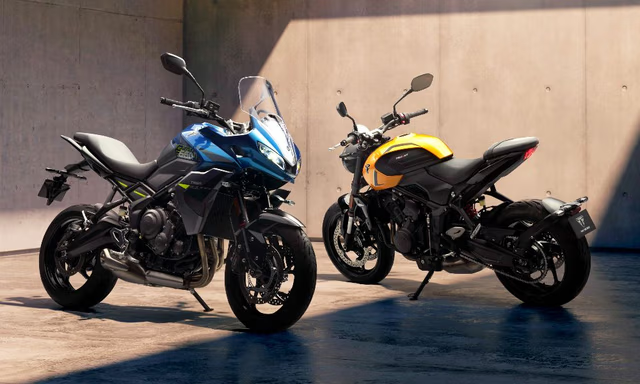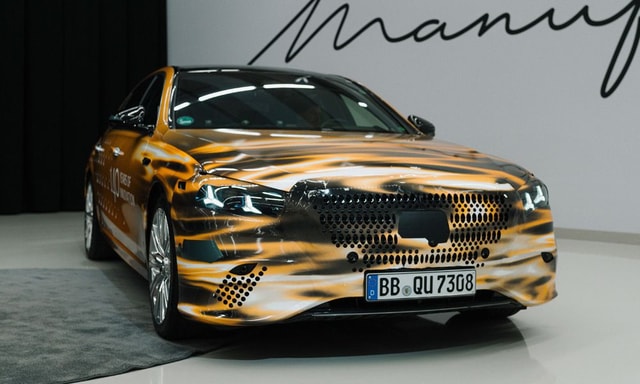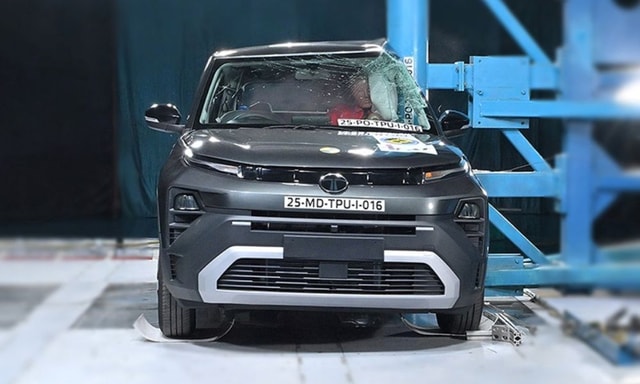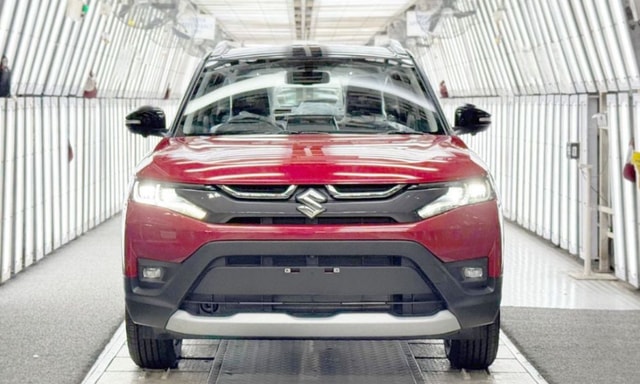Tata Tigor CNG AMT Review: The 'Automatic' Choice For Those Seeking A CNG-Powered Everyday Car

- Only available in top two XZ and XZ+ variants
- Torque delivery improved compared to manual version
- AMT fine-tuned further to better respond to driver inputs
Last month, Tata Motors introduced India’s first ‘automatic’ CNG car with the Tiago and Tigor iCNG AMT. The automated manual transmission system (AMT) allows a regular manual gearbox to be operated like an automatic transmission. That means two pedals only – no clutch pedal – and three shift positions – reverse, neutral and drive. The car – technically a hybrid - can be driven in both CNG and petrol mode and can be either switched manually between the two or can switch itself to petrol when it runs out of CNG. We drove it in Mumbai recently and here is what we learned.
Also Read: Tata Tiago and Tigor iCNG AMT Launched In India
Tata Tigor CNG AMT: Design & Styling
Based on the same platform as the smaller Tiago, the Tata Tigor first broke cover in 2017 and has remained mostly similar in design. The third box has been neatly integrated into the original hatchback design. With an eye to keep reengineering costs in check, the C-pillar was untouched and instead the boot lid was etched out in a neat flawless way. The downside is that the boot opening was restricted.
No exterior differentiation to a petrol-only Tigor AMT apart from iCNG badge on the boot lid.
The car comes shod with 14-inch steel wheels styled to look like an alloy (Tata calls it Hyperstyle wheels) in a bid to keep costs in check. But this is a standard feature on the AMT version. Overall, the Tigor still looks taut and compact with a nice flowing profile. For a design that has remained mostly untouched since 2019, it has aged well and doesn’t look dated, yet.
Largely untouched since 2019, Tigor still looks fresh; AMT version gets 14-inch ‘Hyperstyle’ steel wheels as standard
Exterior features seen here, such as the chrome finish on the grille and window line, shark fin antenna and projector headlamps with LED DRLs are only available in the top trim. The car is available in five exterior colours which include Meteor Bronze (pictured here), white, red, grey and blue.
Tata Tigor CNG AMT: Interior
Identical to the petrol-only version of the Tigor. Thankfully, it still has actual buttons as steering controls and not Nexon-like touch type
Tata has tried hard to give this entry-level ‘sedan’ a premium feel. We were greeted by a premium near-white interior. This faux leather on the seats is only available in this top trim. The base CNG version gets fabric upholstery. Overall, this is a dark grey/beige dual-tone interior with body-coloured elements. The dashboard is a familiar set up with the large steering wheel with controls for music and telephone. No cruise control or ADAS functions on this. The horn is a bit crude to use. It gets a largely monotone instrument cluster with a digital speedometer and dual fuel indicators – for CNG and petrol. There is not much information on display beyond the basics which is both bad (appears too simple and old school) and good (not too much distraction). There is push button start and steering angle adjustment. The centre console has an added switch to toggle between CNG and petrol modes.
Instrument cluster layout differs to include CNG tank info. Driver can toggle between petrol and CNG with a single switch
There is a 7.0-inch touchscreen on the dashboard for infotainment access. Gets a usual array of controls. Is easy on the eye but doesn’t feel very upmarket in terms of touch and feel. It’s a tad slow in response but clear in design. Tigor iCNG comes with Android Auto and Apple CarPlay function. The latter wasn’t working on our test cars though. Music system is again a standard affair. The car gets automatic climate control. Despite the strong sunshine during most of our test drive, the air conditioner worked flawlessly. With the firm seats, it remains a reasonably comfortable cabin. We also like the dual rear seat pockets on this one. Overall, while outside sound deadening could be better, vibration and harshness seemed better controlled.
Reasonably spacious rear cabin for a sub-4m car is best for two; dual seat back pockets on the top XZ+ is a clever touch.
No AC vents at the rear but cooling is acceptable. Rear seat is best for two. Centre arm rest is a boon for longer journeys. Despite its compact dimensions, the Tigor is a reasonably spacious car for a small family. With the shift from one large CNG tank to an equivalent sized but twin cylinder set up last year, the Tigor boot has useable space for one large suitcase and some more. At roughly 180 litres the boot isn’t an ideal size but, is more practical than the previous one.
More practical boot layout – not ideal but better than the previous version where the one large cylinder left negligible space.
Tata Tigor CNG AMT: Powertrain & Performance
CNG as a fuel allows the use of the same 1.2-litre three-cylinder Revotron petrol engine with minimal changes. This makes it a practical hybrid where the car can run on either fuel. In CNG mode this unit can puts out a maximum of 72 bhp, relatively lesser than 85 bhp than it can do when using petrol. Torque is higher in CNG mode at 95 Nm at its best. Tata has optimized the pedal maps to better deliver torque at a lower rpm. This has helped it improve driveability at lower revs.
The torque delivery does seem to have gotten better than the manual version of the Tigor. What also helps is the further tuning of the AMT unit that responds to driver inputs with more accurate shifts. It goes through the cogs effortlessly. Only first to second has the most noticeable shift jerk, especially if you floor the throttle. A lighter right foot results in seamless acceleration and upshifts. There is manual override too but it takes a little getting used too. Moreover, the automated system is mostly smarter and you will need some serious levels of practice to do a better job, manually, than it.
The 1199cc Revotron petrol unit is tuned to accept CNG as well. Is a bit noisy on the outside but vibrations are negligible.
Last year, Tata switched the single large CNG cylinder in the boot with two smaller ones in a bid to free up some space for luggage. Together it is equivalent to 70 litres. During our test, with the CNG tank indicator at a single bar (there are 6 in all) we were able to fill up around 5.84 kg worth of CNG. We reckon that makes the Tigor AMT is good enough to run roughly 150 km on CNG alone, maybe even more, as our road test was more demanding on the car than regular real-world driving would be. Compared to petrol that still works out to more than 50 per cent savings in fuel costs. Additionally, there is also a 35-litre petrol tank which will add another 400-420 km worth of range. Helpful during inter-city trips in case you don’t find a CNG pump when needed en route.
CNG-filling port on the Tigor is next to the petrol port. For safety, the engine doesn’t start if the fuel flap is open.
As mentioned earlier, the powertrain has controlled vibrations well. It's a tad noisy on the outside both in CNG as well as when running on petrol but not to an extent where it become bothersome to the car’s occupants or those around it. To avoid any untoward incident while refueling, if the fuel flap is opened, the car’s engine cannot be started.
Tata Tigor CNG AMT: Drive Dynamics
The Tigor’s compact dimensions makes it an easy-to-manouevre car. The driver’s seat affords a good vantage point. Overall visibility is good. The steering is light so easy at low speeds. But it’s a bit vague at most speeds. There is little in terms of feedback. Returnability of steering wheel is a tad slow and needs to be worked upon. It is good to grip and we do like the physical buttons on it.
The AMT adds the necessary spring in the step of the detuned CNG mode. In terms of feel, one can hardly tell the difference between the two.
Ride is a bit on the softer side. This makes it a bit bouncy and handful for sudden directional changes. But on the brighter side it is able to absorb bad roads, potholes and even small speed bumps without rattling the bones of those inside. The car’s 14-inch wheels comes with high profile tyres which helps the ride. It uses McPherson struts with coil springs at the front and semi-independent rear suspension.
The Tigor iCNG is as happy on open highway as it is on busy roads.
The Tigor can hold its line in a straight line too at high speeds but needs regular correction. Braking is just about adequate. At just around a tonne it isn’t a heavy car, so gets away with front disc and rear drum brakes. There isn’t much weight shifting during emergency braking.
Tata Tigor CNG AMT: Ownership & Verdict
The Tigor iCNG AMT comes with a 3 year/100,000km warranty, same as the manual model. Since it is available in only the top two trims, the car is reasonably specced. Convenience features such as cooled glove box, one touch driver-side window, rear arm rest with cup holders and electric boot unlock are standard. So are rear camera/defogger, front fog lamps and follow-me home lamps.
Since it is not being sold in the base XM variant, the standard feature list on the iCNG AMT is reasonably long.
Price for the XZ trim starts at Rs 8.85 lakh while the XZ+ costs Rs 70,000 more (all prices, ex-showroom). With the latter the car also comes with auto headlamps, rain sensing wipers, climate control, auto folding ORVMs, rear charging port and projector headlamps among others.
With lower fuel cost, the CNG version makes a lot of sense if you have a lot of running with your car. Hence it would make sense for many urban office goers. With AMT even more so that you don’t have the hassle of frequent gear changes. As per estimates the current CNG pumps network in India is roughly 5000 stations. That’s less than 10 per cent of petrol/diesel pump strength in our country. Gujarat, UP and Maharashtra are the top three states with the most CNG pumps.
The Tigor iCNG AMT is makes a lot of sense as a practical everyday runabout.
In dense area such as Mumbai, filling CNG can be a time consuming process because frankly there are not enough CNG stations around. If there is no extra waiting, the actual CNG filling time is the same as that of any petrol/diesel car. We took less than two minutes to fill the Tigor and luckily had no wait time as we were outside Mumbai city limits. Apart from the pump wait time, which is dynamic, the car’s only downside is if you are going long distance with a full load of people you probably still won’t have enough space for their luggage. If you need an efficient daily runabout and can work your way around these hurdles, the Tigor iCNG is a no-brainer.
Latest News
 Janak Sorap | Jan 21, 20262026 Triumph Trident 660 and Tiger Sport 660 Unveiled; India Launch This YearBased on the setup offered on the Daytona 660, this is the most comprehensive update the Trident and Tiger Sport has received since their introduction.3 mins read
Janak Sorap | Jan 21, 20262026 Triumph Trident 660 and Tiger Sport 660 Unveiled; India Launch This YearBased on the setup offered on the Daytona 660, this is the most comprehensive update the Trident and Tiger Sport has received since their introduction.3 mins read Jaiveer Mehra | Jan 21, 2026New Mercedes-Benz S-Class Previewed Ahead Of Jan 29 Global DebutMercedes says that over 50 per cent of the parts in the upcoming S-class are new, with the car also set to be L4 autonomous driving ready.3 mins read
Jaiveer Mehra | Jan 21, 2026New Mercedes-Benz S-Class Previewed Ahead Of Jan 29 Global DebutMercedes says that over 50 per cent of the parts in the upcoming S-class are new, with the car also set to be L4 autonomous driving ready.3 mins read car&bike Team | Jan 21, 20262026 Jeep Meridian Updated With Sliding Second Row Seats; Prices Start At Rs. 23.33 LakhThe update is limited to select three-row variants of the Jeep Meridian, namely, Limited and Overland.1 min read
car&bike Team | Jan 21, 20262026 Jeep Meridian Updated With Sliding Second Row Seats; Prices Start At Rs. 23.33 LakhThe update is limited to select three-row variants of the Jeep Meridian, namely, Limited and Overland.1 min read Jaiveer Mehra | Jan 21, 2026Skoda Kylaq Classic+, Prestige+ Prices RevealedSkoda has also confirmed a new Sportline variant that will join the lineup later in the year.1 min read
Jaiveer Mehra | Jan 21, 2026Skoda Kylaq Classic+, Prestige+ Prices RevealedSkoda has also confirmed a new Sportline variant that will join the lineup later in the year.1 min read Jaiveer Mehra | Jan 20, 2026Tata Punch Facelift Bharat NCAP Crash Test Scores Revealed; Gets 5-Star RatingFacelifted internal combustion Punch secures 30.58 out of 32 for adult occupant protection and 45 out of 49 for child occupant protection.1 min read
Jaiveer Mehra | Jan 20, 2026Tata Punch Facelift Bharat NCAP Crash Test Scores Revealed; Gets 5-Star RatingFacelifted internal combustion Punch secures 30.58 out of 32 for adult occupant protection and 45 out of 49 for child occupant protection.1 min read Seshan Vijayraghvan | Jan 20, 2026Maruti Suzuki To Invest Rs. 35,000 Crore For Setting Up New Manufacturing Plant In GujaratThe new facility will come up in Khoraj, on 1,750 acres of land provided by Gujarat Industrial Development Corporation (GIDC).2 mins read
Seshan Vijayraghvan | Jan 20, 2026Maruti Suzuki To Invest Rs. 35,000 Crore For Setting Up New Manufacturing Plant In GujaratThe new facility will come up in Khoraj, on 1,750 acres of land provided by Gujarat Industrial Development Corporation (GIDC).2 mins read
 Bilal Firfiray | Jan 21, 2026Tata Punch Facelift Review: New Turbo Engine; Same Old SoulWith the update, the Tata Punch facelift retains its character of being a healthy runabout, which is perfect for Indian roads. But have these changes made it any better?7 mins read
Bilal Firfiray | Jan 21, 2026Tata Punch Facelift Review: New Turbo Engine; Same Old SoulWith the update, the Tata Punch facelift retains its character of being a healthy runabout, which is perfect for Indian roads. But have these changes made it any better?7 mins read Amaan Ahmed | Jan 17, 2026Bajaj Chetak C25 First Ride Review: Basic, Likeable E-Scooter For First-Time RidersThe Chetak C25, in quite a few ways, is poles apart from the larger and more powerful 30 and 35 Series models, but in its mannerisms, it is very much a Chetak.8 mins read
Amaan Ahmed | Jan 17, 2026Bajaj Chetak C25 First Ride Review: Basic, Likeable E-Scooter For First-Time RidersThe Chetak C25, in quite a few ways, is poles apart from the larger and more powerful 30 and 35 Series models, but in its mannerisms, it is very much a Chetak.8 mins read Bilal Firfiray | Jan 9, 2026Toyota Urban Cruiser Hyryder: 10,000 km Long-Term ReviewAfter spending over three months and 10,000 km with the Toyota Urban Cruiser Hyryder Hybrid, we were impressed by its real-world mileage, seamless hybrid, practical comfort, and Toyota reliability. Is it the best C-SUV then?5 mins read
Bilal Firfiray | Jan 9, 2026Toyota Urban Cruiser Hyryder: 10,000 km Long-Term ReviewAfter spending over three months and 10,000 km with the Toyota Urban Cruiser Hyryder Hybrid, we were impressed by its real-world mileage, seamless hybrid, practical comfort, and Toyota reliability. Is it the best C-SUV then?5 mins read Seshan Vijayraghvan | Jan 8, 20262026 Mahindra XUV 7XO Review: Big On Tech, Bigger On ComfortThe new Mahindra XUV 7XO is flashier, feature packed, and comes with more advanced tech. But are the changes just incremental or actually substantial?1 min read
Seshan Vijayraghvan | Jan 8, 20262026 Mahindra XUV 7XO Review: Big On Tech, Bigger On ComfortThe new Mahindra XUV 7XO is flashier, feature packed, and comes with more advanced tech. But are the changes just incremental or actually substantial?1 min read Preetam Bora | Jan 10, 2026Simple One Gen 2 First Ride Review: 265 km Claimed Range!The Gen 2 model of Simple Energy’s first electric scooter gets a fair few updates, including new features, tech, more range and lighter weight. We spent a couple of hours with the Simple One Gen 2 to find out if it manages to impress.6 mins read
Preetam Bora | Jan 10, 2026Simple One Gen 2 First Ride Review: 265 km Claimed Range!The Gen 2 model of Simple Energy’s first electric scooter gets a fair few updates, including new features, tech, more range and lighter weight. We spent a couple of hours with the Simple One Gen 2 to find out if it manages to impress.6 mins read







































































































































